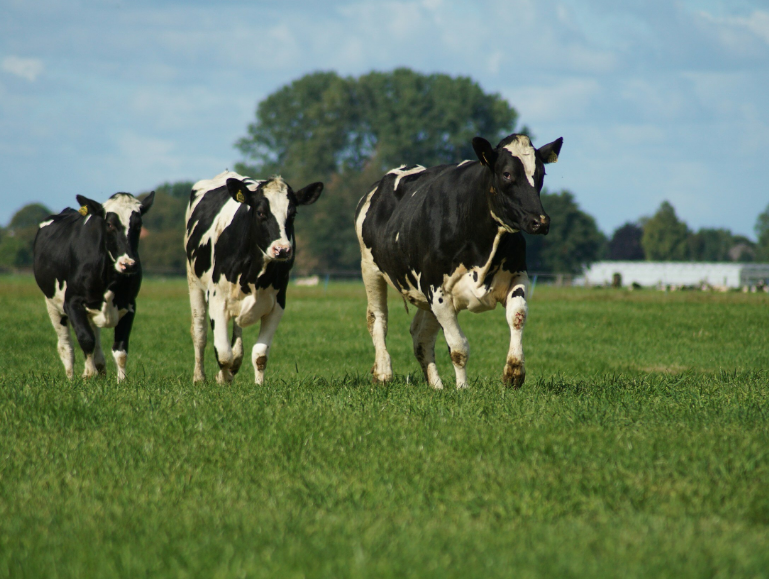Did you know that grass-fed lamb and grass-fed beef are the most bioavailable products you can eat? In fact, grass-fed lamb and beef are so nutritionally replete that solely eating these products would provide you enough nutrients meaning you would never need to eat vegetables.
But what if we compare the two super foods? Which do you think would be healthier?
In this article, we’ll explore lamb vs. beef head-to-head in nutritional comparison.
Why Choose Lamb or Beef in the First Place?
Lamb and beef are both red meat from ruminant animals.
Ruminant animals graze on grass and rely on a rumen stomach that ferments cellulose from plants into fatty acids as a primary energy source.
Ruminant animals are better than nonruminant animals like pigs, fish, and fowl at transforming foods into an optimal fatty acid profile for humans.
The ruminant digestive process also does a good job of eliminating naturally occurring plant toxins and antinutrients from the plant they eat.
Since humans don’t have a rumen, when we eat plant foods, their natural plant defense mechanisms can inhibit nutrient absorption, degrade our intestinal barrier, and cause inflammation.
Therefore, eating ruminant animals is the most efficient way to transfer plant nutrients to our body.
Lamb vs. Beef: Nutrient Density
Both lamb and beef are both bonafide superfoods. They are the most nutritionally complete foods on this earth, that the difference in nutrient density is very minimal. However, I know you want to know which is considered the “GOAT”, so let’s dive into the nutrient details and see who comes out on top!
To figure out the winner, the best place to start is by comparing their beneficial nutrients. This entails fats, proteins, vitamins, minerals, and antioxidants.
Fatty Acids
Both lamb and ribeye steak have excellent fatty acid profiles, but lamb has the edge thanks to a hyper-abundance of a highly beneficial fatty acid called Conjugated Linoleic Acid (CLA). (See table #1). CLA is also a fatty acid that humans cannot form on their own, so we need to get that from animal sources.
CLA is formed in when plants are fermented during the ruminant process. More CLA’s help:
-
Reduce excess body fat and increase lean muscle mass
-
Reduced the risk of heart disease
-
Boost immune function
-
Prevents and reverse symptoms of type-2 diabetes
-
Supports bone formation and mineral density
Omega 3 Fatty Acids
Lamb provides a remarkable dose of omega-3 fatty acids, with 85% RDV per 8 oz. serving.
Ribeye steak eeks out only 5% RDV.
Omega 3 fatty acids provide numerous benefits for your body and brain, including:
-
Supports eye health
-
Blood sugar regulation
-
Reduced inflammation
Vitamins & Minerals
The vitamin and mineral content of lamb vs. beef is neck and neck, with both providing significant B and important minerals. But let’s look at a few areas where they vary.
Vitamin B12:
Both lamb and beef provide an abundance of B12, but beef tops lamb with 323% vs. 238% RDV
The importance of b12 to neurological function is reflected in the numerous studies showing that people who eat more meat experience significantly lower incidences of depression and psychiatric disorders than vegetarians and vegans
B12 also plays a key role in important functions such as
-
Formation of red blood cells
-
Converting food into energy
-
Synthesizing DNA
-
Brain function
Carnitine
Lamb has the highest concentration of carnitine of all foods, with 434mg per 8oz, while beef provides 112-324mg per 8oz.
Carnitine has been found to
-
significantly improve male fertility
-
Reduce anemia
-
Support heart health
Carnosine
Beef provides 365mg/100g, and lamb provides 400mg/100g, giving us another instance where lamb packs slightly more nutritional punch than beef.
Carnosine provides anti-aging properties, protects the heart, and prevents glycation.
Creatine
Lamb contains only half the creatine as beef, yet both are excellent dietary sources.
Creatine Improves cognitive function, enhances athletic performance, supports cardiovascular health and glycemic control.
Taurine
Beef provides 46.3mg of taurine per 100-gram serving, while lamb provides 43.8mg per 100 grams. So, for this important amino acid, it’s a toss-up.
Taurine acts as a powerful antioxidant that reduces glycation, inflammation, and oxidative stress, while offering dramatic anti-depressive effects in animal studies.
Zinc
With 228% of your RDV in zinc per 8 oz serving, beef is superior to lamb’s still substantial 82% for the same serving size.
Zinc is an essential nutrient that supports heart health, immune function, other vital functions.
Calories and Protein
The final differences we will look at are the most looked at stats on all products: calories and protein.
While most people consider these the most important data to look at, they are in fact the least necessary to think about. But, for the sake of things, we will take a look anyway!
Calories:
When looking at calories, calories refer to the energy people get from the food and drink they consume.
While people are obsessed with calories, it is difficult to asses different products because nutrient density varies so much. If we compare a candy bar to grass-fed beef or lamb and you consume 500 calories of each, the beef and lamb will offer a lot more nutrients than a candy bar which can be absorbed much faster and more efficiently.
Comparing lamb to beef, surprisingly lamb comes out on top with more calories per 8oz serving with 813 cals compared to 560 cals in beef.
Don’t view this as a negative towards lamb, as it simply means lamb provides more energy to your body than beef does.
Protein:
Proteins are large biomolecules and macromolecules that comprise one or more long chains of amino acid residues. Protein helps rebuild damaged tissue, which in turn helps grow your muscles.
Other benefits include:
-
Weight loss
-
Curbing hunger
-
Optimizing immune function
-
Boosts metabolism
When comparing lamb vs. beef, beef comes out on top with 15.2g more per 8oz.
So Who’s The Winner?
Based on all the nutritional information, it’s a very close call. Both lamb and beef are the most nutrient dense foods in the world with a huge variety of important fatty acids, proteins, vitamins, and minerals that our bodies need to function to their highest potential.
If we look at fatty acids, like CLA and omega-3’s, lamb comes out victorious and can be seen as marginally healthier.
If we look at vitamins, like B12 and zinc, beef comes out victorious.
The bottom line is both are excellent and both should be eaten with abundance!
And don’t just stick with lamb or beef, eat both every week!
Table #1



